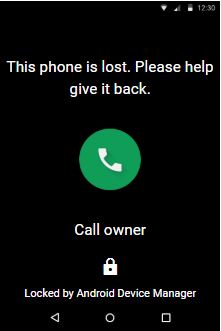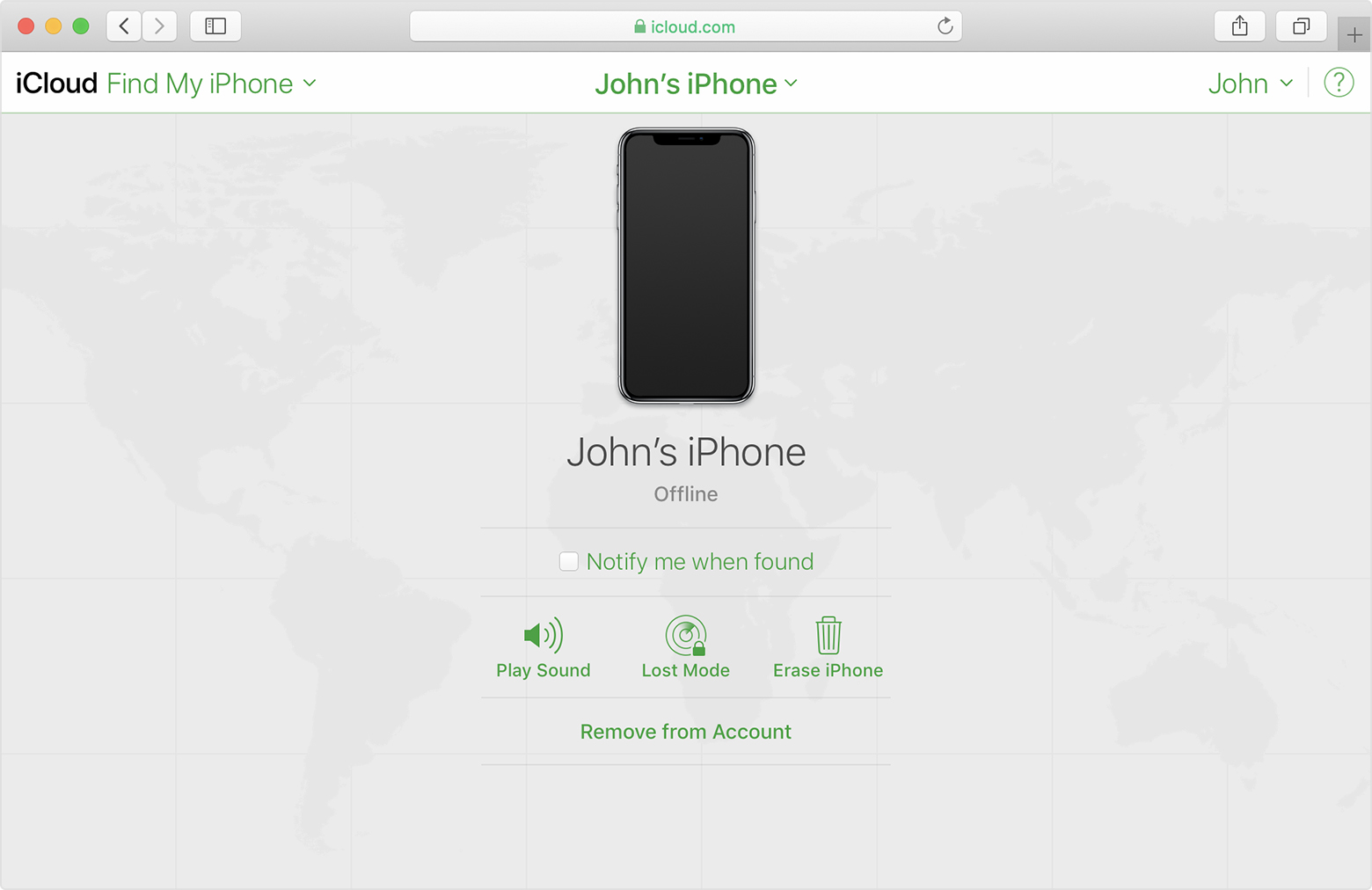This guide explores a list of apps and devices that are useful for tracking a cell phone remotely, both with and without an internet connection. We will also discuss how one can trace a stolen or lost mobile number through legal and illegal means.
Tracking mobile phone remotely with Internet
The following apps are widely used in android and iOS devices to trace location of a lost or stolen mobile phone.
Android device manager
Android device manager is a preinstalled mobile phone tracker app that comes with all android smartphones. With the help of GPS, it can trace the location of the device and its last online status. We can remotely play sound, secure the device by safety lock, display a message or contact number and erase contents of the device.
To use android device manager, a device must:
- Be turned on
- Be signed in to your Google Account
- Have a data connection
- Have Location turned on
- Have Find My Device turned on (it is on by default)
- Be visible on Google Play (visible by default)
Follow the steps given below to access and control a device remotely
- Ensure you are logged in to your Google account
- Navigate to https://www.google.com/android/find
- Select your device from the list (if you have more than one device synced)
- You will be shown a few options to remotely access and control your device
Locate device : By choosing locate device, Google maps will show you the last active location of the device.
Play sound : Device manager will make the device ring for 5 minutes, even if the device is set in silent mode.
Lock your phone : By choosing Lock, the device will be locked and a message along with a contact number you gave will be displayed.


Erase device : Google will erase all contents of phone memory. Memory card data will still be available. Once the erase is done, you cannot access or control your device remotely. Erasing should be considered only if all the other options of finding the device fails since you won’t be able to access the deleted data that wasn’t backed up to Google.
Find My iPhone
Apple devices are known for their strong security implementation. Jail-breaking an iPhone is impossible unless the version of iOS is vulnerable. Find my iPhone is an mobile tracker app used to remotely locate and access stolen and lost iOS devices such as iPhones, Mac computers, Apple Watch, and AirPods.
But you must have set up this option to remotely access your device.
How to set up Find My iPhone feature
- Start at your Home screen.
- Tap Settings > [your name] > iCloud. If you’re using iOS 10.2 or earlier, go to Settings > iCloud.
- Scroll to the bottom and tap Find My iPhone.
- Slide to turn on Find My iPhone and Send Last Location.
- If you’re asked to sign in, enter your Apple ID.
Find the approximate location of your iOS device, Apple Watch, AirPods, or Mac computer using Find My iPhone on iCloud.com. You can locate your device if:
- Find My iPhone is set up on the iOS device or Mac you want to locate.
- Apple Watch is paired with an iPhone.
- The iOS device, Apple Watch, or Mac is online.
- AirPods are out of their case and near one of your iOS devices. Any of your iOS devices can find the AirPods, but they must be paired with at least one of your iOS devices.


Tracking mobile phone remotely without Internet
While constant internet connectivity is generally crucial for precise phone tracking, some apps offer features to help locate a device even without it. These apps primarily rely on SMS commands to communicate with the lost phone.
How SMS-Based Tracking Apps Work
- Pre-installation: These apps (like Findlostphone and Wiperoid) need to be installed on the phone before it’s lost.
- SMS Commands: The owner sends specific SMS commands to the lost phone’s number.
- GPS Coordinates: The app on the lost phone responds to these commands by sending its GPS location via SMS.
- SIM Card Change Detection: Some apps can detect SIM card changes and alert the owner (using a pre-configured number) via SMS.
Limitations:
- App Installation: This method is only effective if the app is installed beforehand.
- Basic Tracking: These apps typically provide basic location tracking and SIM card change alerts, not the extensive features of internet-based tracking.
- Potential Delays: Location updates might be delayed as they depend on the phone receiving and responding to SMS messages.
Tracking a mobile number using IMEI / IMSI / MSISDN number
- IMEI (International Mobile Equipment Identity): Uniquely identifies a device.
- IMSI (International Mobile Subscriber Identity): Uniquely identifies a SIM card.
- MSISDN (Mobile Station International Subscriber Directory Number): Your mobile number, including the international code.
Every mobile device shares these three numbers when connecting to a cellular tower. This means only the tower (or the telecom operator) can track a mobile location.
Legal way to track a phone
The only legal way to track a phone is through the telecom operator, which requires a court order. This process is often complex and time-consuming, making it difficult to use in cases of theft or loss.
Triangulation:
Telecom operators use triangulation to locate devices. This method uses signals from three nearby towers to estimate the phone’s location.
Important Considerations:
- Privacy Concerns: Tracking a phone without proper authorization raises significant privacy concerns.
- Legal Restrictions: Laws regarding phone tracking vary by country. It’s crucial to understand and comply with local regulations.
Illegal way to track a mobile phone
Stingrays, also known as IMSI catchers or cell-site simulators, are surveillance devices that mimic legitimate cell phone towers. They trick nearby mobile phones into connecting to them instead of real towers, allowing law enforcement agencies to intercept calls, messages, and location data.
How Stingrays Work:
- Impersonation: Stingrays act as a more powerful “fake” cell tower, forcing phones in the area to connect to them.
- Data Interception: Once connected, the Stingray can intercept calls, text messages, and other data transmitted by the phone.
- Location Tracking: Stingrays can pinpoint a phone’s location with considerable accuracy.
- Vulnerability: Even modern smartphones with encryption are vulnerable to Stingray surveillance because the initial connection to the device happens before encryption is established.
Concerns and Controversies:
- Warrantless Use: A major concern is the frequent use of Stingrays without obtaining warrants, raising serious privacy and legal issues.
- Indiscriminate Surveillance: Stingrays can capture data from all phones within their range, not just the targeted device, potentially violating the privacy of innocent bystanders.
- Lack of Transparency: Law enforcement agencies often try to conceal their use of Stingrays, making it difficult to hold them accountable.
Availability and Legality:
- Restricted Sale: While it’s true that Stingray-like devices might be found on online platforms like Alibaba, their sale and use are typically restricted and regulated.
- Illegal Use: Using a Stingray without proper authorization is illegal in most jurisdictions.
Lost cell phone?
It’s easy to locate your smartphone using a device manager if you lose it, but your phone must be connected to the internet for remote access. If it’s not online, you can choose to erase the device memory, which will be wiped once it reconnects to the internet.
SMS command-based tracking apps are only helpful if installed before losing your phone.
Recovering a lost device without an internet connection is nearly impossible. Most countries don’t offer cell phone tracking services when a complaint is filed due to the complexity of the process. However, filing a complaint allows you to block the phone completely within the country, preventing its use. All cellular towers in the country will blacklist its IMEI number, rendering it unusable even if you recover it.

Sangat bagus sekali